869 books for « adams j t »Edit
-
Type
Book (858)
Magazine (2)
Music sheets (9)
-
Latest
Last 24h (13)
Last month (4)
Last week (2)
-
Language
English (6)
French (861)
Russian (2)
-
Century
17th (1)
18th (5)
19th (25)
20th (447)
21st (90)
-
Countries
Belgium (38)
Canada (4)
Côte d'Ivoire (3)
Denmark (13)
France (735)
Italy (1)
Spain (3)
Switzerland (66)
United Kingdom (4)
United States of America (2)
-
Syndicate
ALAC (4)
CLAQ (2)
ILAB (432)
NVVA (7)
SLACES (7)
SLAM (399)
Topics
- Adams ansel (5)
- Adams clifton (26)
- Adams gerry (5)
- Adams john (6)
- Africa (2)
- Architecture (11)
- Armenia (2)
- Astrology (24)
- Astronomy (3)
- Astrophysics (2)
- Berlin (2)
- Bible (4)
- Biography (5)
- Boston (2)
- Botany (2)
- Canada (4)
- Chartres (2)
- Children’s books (6)
- Cinema (6)
- Comic strip (36)
- Detective novels (34)
- Drawings (2)
- Earth (3)
- Economics (3)
- Education (3)
- Egypt (3)
- Electricity (2)
- Engines (3)
- England (3)
- English (30)
- Esotericism (7)
- Ethnology (3)
- Fantasy (5)
- Fine arts (4)
- First edition (30)
- Fox (3)
- Gardens (5)
- Geography (7)
- Geology (2)
- Georgia (3)
- Germanic languages (2)
- Hackney (11)
- History (22)
- Humour anecdotes (2)
- Industrial arts & crafts - fine arts (4)
- Italian (3)
- Japan (6)
- Jeanjean marcel (13)
- Language (3)
- Linguistics (3)
- Literature (42)
- Marilyn (6)
- Mechanics (2)
- Medicine (2)
- Middle ages (2)
- Miller (4)
- Mines & miners (3)
- Music (3)
- Navy (5)
- New-york (2)
- Oceania (2)
- Painters (3)
- Painting (3)
- Palaeontology (2)
- Philology (5)
- Philosophy (11)
- Photography (18)
- Poetry (7)
- Policy (3)
- Posters (2)
- Psychology (3)
- Religions (4)
- Reliure (2)
- Review (4)
- Reviews (2)
- Ruth (8)
- Science fiction (5)
- Sciences (5)
- Sciences & technique (2)
- Scores (11)
- Scout (3)
- Sculpture (2)
- Simons (2)
- Sociology (3)
- Songs (7)
- Sports (2)
- Spying (5)
- Switzerland (4)
- Sword (3)
- Theology (5)
- Travel (4)
- United kingdom (3)
- United states (4)
- Various (5)
- War (8)
- Western (4)
- Yoga (7)
( Bandes Dessinées - Conan le Barbare ) - Neal Adams - Roy Thomas - Len Wein - Marv Wolfman.
Reference : 22204
(1980)
Ténèbres écarlates.
Les éditions du Triton 1980. In-4 broché, non paginé, au format 28,5 x 22 cm. Couverture illustrée par une illustration en couleurs de Ka-Zar. 4ème plat avec photographie de Neal Adams. Dos carré, muet, insolé. Plats et intérieur frais, malgré un petit éclat au bord gauche du 4ème plat. Dessins en noir par Neal Adams sur scénarios de Neal Adams, Roy Thomas, Len Wein et Marv Wolfman. Deux illustrations en fin d'ouvrage. Contient la mythique aventure de Conan : La Malédiction du Crâne d'Or. Très bel état général. Edition originale. Rare.
Site Internet : Http://librairie-victor-sevilla.fr.Vente exclusivement par correspondance. Le libraire ne reçoit, exceptionnellement que sur rendez-vous. Il est préférable de téléphoner avant tout déplacement.Forfait de port pour un livre 7 €, sauf si épaisseur supérieure à 3 cm ou valeur supérieure ou égale à 100 €, dans ce cas expédition obligatoire au tarif Colissimo en vigueur. A partir de 2 livres envoi en colissimo obligatoire. Port à la charge de l'acheteur pour le reste du monde.Les Chèques ne sont plus acceptés.Pour destinations extra-planétaire s'adresser à la NASA.Membre du Syndicat Lusitanien Amateurs Morues
John Adams. ( Avec cordiale dédicace de Renaud Machart à Jérôme Garcin ).
Actes Sud / Classica 2004. In-12 broché oblong de 157 pages au format 19 x 10 cm. Couverture avec portrait photographique de John Adams. Dos carré. Plats et intérieur frais. Etude sur John Adams par Renaud Machart. Edition originale ornée d'une cordiale dédicace autographe, signée, de Renaud Machart au journaliste et écrivain français, Jérôme Garcin.
Site Internet : Http://librairie-victor-sevilla.fr.Vente exclusivement par correspondance. Le libraire ne reçoit, exceptionnellement que sur rendez-vous. Il est préférable de téléphoner avant tout déplacement.Forfait de port pour un livre 7 €, sauf si épaisseur supérieure à 3 cm ou valeur supérieure ou égale à 100 €, dans ce cas expédition obligatoire au tarif Colissimo en vigueur. A partir de 2 livres envoi en colissimo obligatoire. Port à la charge de l'acheteur pour le reste du monde.Les Chèques ne sont plus acceptés.Pour destinations extra-planétaire s'adresser à la NASA.Membre du Syndicat Lusitanien Amateurs Morues
( Bandes Dessinées ) - Marcel Gotlib - Jean Solé - Jacques Lob - Edika - Neal Adams - André Franquin - Neal Adams - Jean Cabut dit Cabu - Jacques Tardi - Jean-Claude Mézières - Enki Bilal - Collectif.
Reference : 31057
(2008)
Fluide Glacial, Numéro Spécial hors série : SuperDupont.
Editions Audie / Fluide Glacial, Numéro Spécial hors série, spécial " SuperDupont " de 1982. In-4 broché de 84 pages au format 28,5 x 21,5 cm. Couvertures illustrées par Marcel Gotlib et Cabu. Numéro spécial, hors série, consacré à Superdupont avec de très nombreuses participations sous forme de BD en noir et blanc et d'illustrations en couleurs ( Marcel Gotlib, Jean Solé, Jacques Lob, Edika, Neal Adams , André Franquin - Binet, Jean Cabut dit Cabu, Jacques Tardi, Jean-Claude Mézières, Enki Bilal, etc ). Rare édition originale en superbe état général.
Site Internet : Http://librairie-victor-sevilla.fr.Vente exclusivement par correspondance. Le libraire ne reçoit, exceptionnellement que sur rendez-vous. Il est préférable de téléphoner avant tout déplacement.Forfait de port pour un livre 7 €, sauf si épaisseur supérieure à 3 cm ou valeur supérieure ou égale à 100 €, dans ce cas expédition obligatoire au tarif Colissimo en vigueur. A partir de 2 livres envoi en colissimo obligatoire. Port à la charge de l'acheteur pour le reste du monde.Les Chèques ne sont plus acceptés.Pour destinations extra-planétaire s'adresser à la NASA.Membre du Syndicat Lusitanien Amateurs Morues
Deadman, tome 1.
Les Editions du Fromage / Collection U.S.A 1978. In-4 broché de 128 pages au format 18,5 x 27 cm. Couverture illustrée. Dos carré avec frottis en haut et en bas, ainsi que sur les mors. Plats et intérieur frais, malgré de tout petits frottis aux mors et aux coins. Couverture couleurs et dessins en noir Neal Adams, sur scénarios de Neal Adams, Jack Miller et Arnold Drake. Cet album, seul tome paru, contient les 8 premiers épisodes de Deadman. Bel état général. Edition originale. Rare.
Site Internet : Http://librairie-victor-sevilla.fr.Vente exclusivement par correspondance. Le libraire ne reçoit, exceptionnellement que sur rendez-vous. Il est préférable de téléphoner avant tout déplacement.Forfait de port pour un livre 7 €, sauf si épaisseur supérieure à 3 cm ou valeur supérieure ou égale à 100 €, dans ce cas expédition obligatoire au tarif Colissimo en vigueur. A partir de 2 livres envoi en colissimo obligatoire. Port à la charge de l'acheteur pour le reste du monde.Les Chèques ne sont plus acceptés.Pour destinations extra-planétaire s'adresser à la NASA.Membre du Syndicat Lusitanien Amateurs Morues
Une Aventure des X-Men, n° 1 : Ka-Zar
Lug Editeur 1975. In-4 broché de 80 pages au format 21,5 x 28 cm. Couverture illustrée. Dos carré. Plats et intérieur parfaits. Superbes illustrations de Neal Adams sur scénario de Roy Thomas. Rare édition originale, surtout dans un tel état de fraicheur, proche du parfait. Exemplaire enrichi de la reprodcution en noir, d'un dessin de Neal Adams, opposant Deadman au Spectre.
Site Internet : Http://librairie-victor-sevilla.fr.Vente exclusivement par correspondance. Le libraire ne reçoit, exceptionnellement que sur rendez-vous. Il est préférable de téléphoner avant tout déplacement.Forfait de port pour un livre 7 €, sauf si épaisseur supérieure à 3 cm ou valeur supérieure ou égale à 100 €, dans ce cas expédition obligatoire au tarif Colissimo en vigueur. A partir de 2 livres envoi en colissimo obligatoire. Port à la charge de l'acheteur pour le reste du monde.Les Chèques ne sont plus acceptés.Pour destinations extra-planétaire s'adresser à la NASA.Membre du Syndicat Lusitanien Amateurs Morues
The Art of Neal Adams.
Etats-Unis, Lakewood, Vanguard Productions 2010 ( Hardcover ). In-4 cartonnage éditeur de 144 pages au format 31 x 3,5 x 23,5 cm. Superbe couverture illustrée. Dos carré. Plats et intérieur parfaits. Pages de gardes illustrée. Essai écrit par l'artiste, consacré, à son oeuvre graphique de ses débuts jusqu'à 2010. Textes en anglais. Magnifique anthologie d'illustrations, légendées, en couleurs et en noir, de Neal Adamss dont de nombreuses de " Batman ". Cet artiste est comme l'un des plus grands illustrateurs américains de bande dessinée. Edition originale en version luxe cartonnée. Peu courant, surtout dans un tel état de fraicheur, proche du neuf.
Site Internet : Http://librairie-victor-sevilla.fr.Vente exclusivement par correspondance. Le libraire ne reçoit, exceptionnellement que sur rendez-vous. Il est préférable de téléphoner avant tout déplacement.Forfait de port pour un livre 7 €, sauf si épaisseur supérieure à 3 cm ou valeur supérieure ou égale à 100 €, dans ce cas expédition obligatoire au tarif Colissimo en vigueur. A partir de 2 livres envoi en colissimo obligatoire. Port à la charge de l'acheteur pour le reste du monde.Les Chèques ne sont plus acceptés.Pour destinations extra-planétaire s'adresser à la NASA.Membre du Syndicat Lusitanien Amateurs Morues
Cauchemars.
Les Editions du Fromage / Collection U.S.A 1979. In-4 broché de 111 pages au format 18,5 x 27 cm. Couverture illustrée. Dos carré avec petits frottis en haut et en bas. Plats et intérieur frais, malgré de petits frottis aux mors. Couverture couleurs, dessins en noir et scénarios de Neal Adams. Bel état général. Edition originale. Rare.
Site Internet : Http://librairie-victor-sevilla.fr.Vente exclusivement par correspondance. Le libraire ne reçoit, exceptionnellement que sur rendez-vous. Il est préférable de téléphoner avant tout déplacement.Forfait de port pour un livre 7 €, sauf si épaisseur supérieure à 3 cm ou valeur supérieure ou égale à 100 €, dans ce cas expédition obligatoire au tarif Colissimo en vigueur. A partir de 2 livres envoi en colissimo obligatoire. Port à la charge de l'acheteur pour le reste du monde.Les Chèques ne sont plus acceptés.Pour destinations extra-planétaire s'adresser à la NASA.Membre du Syndicat Lusitanien Amateurs Morues
Cauchemars.
Les Editions du Fromage / Collection U.S.A 1979. In-4 broché de 111 pages au format 18,5 x 27 cm. Couverture illustrée. Dos carré. Plats et intérieur frais, malgré d'infimes frottis aux mors. Couverture couleurs, dessins en noir et scénarios de Neal Adams. Très bel état général. Edition originale. Rare.
Site Internet : Http://librairie-victor-sevilla.fr.Vente exclusivement par correspondance. Le libraire ne reçoit, exceptionnellement que sur rendez-vous. Il est préférable de téléphoner avant tout déplacement.Forfait de port pour un livre 7 €, sauf si épaisseur supérieure à 3 cm ou valeur supérieure ou égale à 100 €, dans ce cas expédition obligatoire au tarif Colissimo en vigueur. A partir de 2 livres envoi en colissimo obligatoire. Port à la charge de l'acheteur pour le reste du monde.Les Chèques ne sont plus acceptés.Pour destinations extra-planétaire s'adresser à la NASA.Membre du Syndicat Lusitanien Amateurs Morues
( Bandes Dessinées - Littérature en Anglais ) - John Carbonaro - Ken Barr - Ernie Colon - Jeffrey Jones - Mike Kaluta - Tony de Zuniga - Neal Adams - Frank Brunner - Bernie Wrightson - Chuck Robinson - Dennis O'Neil - Gerry Conway - Len Wein.
Reference : 31430
(1975)
Fanzine, Phase 1. ( Luxueux micro tirage ).
Etats-Unis, New York / John Carbonaro Publisher 1971. Luxueux fanzine in-4 agrafé en feuilles non paginé, de 80 pages, au format 28 x 21,5 cm. Superbes couvertures illustrées par Ken Barr. Plats et intérieur frais, malgré d'infimes frottis aux coins. Contient des bandes dessinées et des illustrations pour adultes, en noir et blanc, par Ken Barr, Ernie Colon, Jeffrey Jones, Mike Kaluta, Tony de Zuniga, Neal Adams, Frank Brunner, Bernie Wrightson, Chuck Robinson, Dennis O'Neil, Gerry Conway, Len Wein. Rare édition originale américaine en superbe état de fraicheur.
Site Internet : Http://librairie-victor-sevilla.fr.Vente exclusivement par correspondance. Le libraire ne reçoit, exceptionnellement que sur rendez-vous. Il est préférable de téléphoner avant tout déplacement.Forfait de port pour un livre 7 €, sauf si épaisseur supérieure à 3 cm ou valeur supérieure ou égale à 100 €, dans ce cas expédition obligatoire au tarif Colissimo en vigueur. A partir de 2 livres envoi en colissimo obligatoire. Port à la charge de l'acheteur pour le reste du monde.Les Chèques ne sont plus acceptés.Pour destinations extra-planétaire s'adresser à la NASA.Membre du Syndicat Lusitanien Amateurs Morues
( Bandes Dessinées - Robert Ervin Howard ) - Roy Thomas - John Buscema - Neal Adams - Pablo Marcos.
Reference : 30532
(1970)
Editions Lug. Une Aventure de Conan, tome 1 : Le Colosse Noir.
Editions Lug / Collection " Super Héros " 1976. In-4 broché, non paginé, au format 28 x 22 cm. Superbe couverture illustrée en couleurs par Neal Adams. Dos carré. Plats et intérieur très frais, malgré d'infimes frottis aux coins. Dessins en noir et blanc de John Buscema et Pablo Marcos, sur scénario de Roy Thomas d'après Robert Ervin Howard. Superbe état général. Edition originale, rare dans un aussi bel état de fraicheur.
Site Internet : Http://librairie-victor-sevilla.fr.Vente exclusivement par correspondance. Le libraire ne reçoit, exceptionnellement que sur rendez-vous. Il est préférable de téléphoner avant tout déplacement.Forfait de port pour un livre 7 €, sauf si épaisseur supérieure à 3 cm ou valeur supérieure ou égale à 100 €, dans ce cas expédition obligatoire au tarif Colissimo en vigueur. A partir de 2 livres envoi en colissimo obligatoire. Port à la charge de l'acheteur pour le reste du monde.Les Chèques ne sont plus acceptés.Pour destinations extra-planétaire s'adresser à la NASA.Membre du Syndicat Lusitanien Amateurs Morues
( Bandes Dessinées - Cinéma - Batman ) - Jerry Ordway - Denny O'Neil - David Fakrikian - David Mazzucchelli - Adam Pirani - Bernie Wrightson - Neal Adams - Will Eisner - Mike Zeck - Bob Kane - Bernard Lehoux - Arnaud Viviant - Philippe Magnan - Thierry Cailleteau - Jerry Ordway Jerry et Denny O'Neil ( Adaptation officielle du film de Tim Burton ) - Adam Pirani - Prince.
Reference : 29419
(1988)
Numéro Hors Série, USA Magazine. Spécial Batman, avec l'adaptation officielle du film en BD par Jerry Ordway Jerry et Denny O'Neil.
Editions Jacques Glénat / USA Magazine Hors Serie, n° 43 bis de 1989. In-4 broché de 102 pages au format 29 x 21 cm. Couvertures illustrées par une photographie de Michael Keaton en Batman et de l'affiche du film. Plats et intérieur frais. Dos carré muet. Numéro entiérement consacré au mythe de Batman et au film de Tim Burton, avec photographies, documents, textes et dessins de David Fakrikian, David Mazzucchelli, Bernie Wrightson, Neal Adams, Will Eisner, Mike Zeck, Bob Kane, Bernard Lehoux, Arnaud Viviant, Philippe Magnan, Thierry Cailleteau. L'adaptation officielle du film de Tim Burton par Jerry Ordway au dessin et Denny O'Neil au scénario, occupe la presque totalité du magazine. En fin d'ouvrage on trouve un article consacré au film avec les photographies des acteurs principaux : Michael Keaton, Jack Nicholson, Kim Basinger, Michael Gough, Pat Hingle, Billy Dee Williams, Jack Palance, ainsi qu'un article avec photographie sur Prince qui a composé la BO du film sous le titre Batman: Motion Picture Soundtrack. A noter que Danny Elfman à lui composé la bande originale instrumentale, avec le thème du film. Edition originale en état superbe proche du parfait.
Site Internet : Http://librairie-victor-sevilla.fr.Vente exclusivement par correspondance. Le libraire ne reçoit, exceptionnellement que sur rendez-vous. Il est préférable de téléphoner avant tout déplacement.Forfait de port pour un livre 7 €, sauf si épaisseur supérieure à 3 cm ou valeur supérieure ou égale à 100 €, dans ce cas expédition obligatoire au tarif Colissimo en vigueur. A partir de 2 livres envoi en colissimo obligatoire. Port à la charge de l'acheteur pour le reste du monde.Les Chèques ne sont plus acceptés.Pour destinations extra-planétaire s'adresser à la NASA.Membre du Syndicat Lusitanien Amateurs Morues
( Bandes Dessinées ) - Jordi Bernet - Sanchez Abuli - Ralph Reese - Chichoni - Mike Zeck - Mara McAfee - Martin Mark - Richard Corben - Simon Revelstroke - Mark Schultz - Bruce Jones - Neal Adams - Brian Bolland - John Bolton - John Byrne - Eric Puech - Bill Sienkiewicz - Kate Worley - Frank Miller - Pepe Moreno - Boris - Barry Smith - Stanley Wiater - Kevin Eastman - Mark Godin - Peter Laird - Collectif.
Reference : 29418
(1988)
Série complète des 5 numéros Hors Série de USA Magazine. Spécial Sexe et Violence & Punisher ( n° 1 à 3 ) - Spécial Fantasmes Phallocrates ( n° 4 ) - Spécial Tortues Ninja, avec parodie officelle du film ( n° 5 ).
Editions Jacques Glénat / USA Magazine de 1988 à 1995. 5 volumes in-4 brochés de 132 pages chacun au format 29 x 5 x 21 cm. Belles couvertures illustrées par Chichoni, Mike Zeck, Mara McAfee. Plats et intérieur frais, à l'exception du n° 5 qui présente en petite trace de déchirure de 4,5 cm au mors supérieur de la couverture. Cette dernière a été restaurée. Dos carrés muets. Intégrale des 5 numéros hors série parue, dont le très rare n° 5 entiérement consacré au film " Les Tortues Ninja ", avec la parodie officielle en BD. Nombreuses participations dont : Jordi Bernet, Sanchez Abuli, Ralph Reese, Chichoni, Mike Zeck, Mara McAfee, Martin Mark, Richard Corben, Simon Revelstroke, Mark Schultz, Bruce Jones, Neal Adams, Brian Bolland, John Bolton, etc. Articles, études, dossiers avec photographies et documents. Edition originale en état superbe proche du parfait. Rarissime série complète.
Site Internet : Http://librairie-victor-sevilla.fr.Vente exclusivement par correspondance. Le libraire ne reçoit, exceptionnellement que sur rendez-vous. Il est préférable de téléphoner avant tout déplacement.Forfait de port pour un livre 7 €, sauf si épaisseur supérieure à 3 cm ou valeur supérieure ou égale à 100 €, dans ce cas expédition obligatoire au tarif Colissimo en vigueur. A partir de 2 livres envoi en colissimo obligatoire. Port à la charge de l'acheteur pour le reste du monde.Les Chèques ne sont plus acceptés.Pour destinations extra-planétaire s'adresser à la NASA.Membre du Syndicat Lusitanien Amateurs Morues
( Bandes Dessinées - Conan - Robert Erwin Howard ) - Stan Lee - Roy Thomas - Barry Smith - Gil Kane - Neal Adams - Frank Thorne - Esteban Maroto - Dick Giordano - John Buscema - Alfredo Alcala - Ernie Chan.
Reference : 22245
(1977)
Spécial Collector's Issue ! Conan the Barbarian. The Cimmerian's greatest adventures co-starring, Red Sonja, she-devils with a sword.
Editions Marvel Comics Group / Marvel Treasury Spécial " Conan the Barbarian " 1977. In-4 broché, agrafé, de 80 pages au format 34 x 25,5 cm. Couvertures illustrées. Dos carré avec titre. Plats avec petits frottis et tassements aux coins. Intérieur frais, malgré un papier de piètre qualité. Contient 3 histoires, scénarisées par Roy Thomas. 1 : The song of Red Sonja illustrée en couleurs par Barry Smith - 2 : Night of Dark God illustrée en couleurs par Gil Kane et Neal Adams - 3 : Black Colossus illustrée en couleurs par John Buscema et Alfredo Alcala. En milieu de BD on trouve un portfolio consacré à Red Sonja avec illustrions en couleurs de dossier de Frank Thorne, Esteban Maroto et Dick Giordano. Au verso du 4ème plat, qui est un peu bruni, on trouve une carte de l'ère Hyborienne. Rarissime et mythique bande dessinée en bel état général.
Site Internet : Http://librairie-victor-sevilla.fr.Vente exclusivement par correspondance. Le libraire ne reçoit, exceptionnellement que sur rendez-vous. Il est préférable de téléphoner avant tout déplacement.Forfait de port pour un livre 7 €, sauf si épaisseur supérieure à 3 cm ou valeur supérieure ou égale à 100 €, dans ce cas expédition obligatoire au tarif Colissimo en vigueur. A partir de 2 livres envoi en colissimo obligatoire. Port à la charge de l'acheteur pour le reste du monde.Les Chèques ne sont plus acceptés.Pour destinations extra-planétaire s'adresser à la NASA.Membre du Syndicat Lusitanien Amateurs Morues
( Bandes Dessinées Objets Para-BD - Robert Ervin Howard - Conan ) - John Rhett Thomas - Roy Thomas - Michael Aldred - Barry Windsor-Smith - John Buscema - Gil Kane - Neal Adams - Jim Starlin - Jim Lee - Marc Silvestri - Mike Mignola - Collectif.
Reference : 9863
(2020)
Coffret collector illustré, en tirage limité à 250 exemplaires : Conan the Barbarian. Tout l'art de Conan le Barbare. Contient une statuette de Conan en résine, peinte à la main, à l'échelle 1/10ème + un Artbook inédit.
Editions Marvel / Panini Comics 2020. Coffret collector illustré, en tirage limité à 250 exemplaires au format 30 x 19 x 24,5 cm. Fermeture magnétique. Ce coffret intitulé Conan the Barbarian contient une statuette de Conan basée sur les dessins de Gerardo Zaffino, fabriquée en résine, peinte à la main, à l'échelle 1/10ème ( 20 cm ) dans sa boîte de protection + un Artbook inédit intitulé " Tout l'art de Conan le Barbare ". Format 28,5 x 22 cm. Couvertures et jaquette illustrée. Recueil de 224 pages avec les plus belles couvertures et les plus belles pages empruntées aux nombreuses publications Marvel qui ont été consacrées au cours des décennies à Conan le Barbare. Textes de John Rhett Thomas, Roy Thomas et Michael Aldred avec nombreuses illustrations, dont : Barry Windsor-Smith, John Buscema, Gil Kane, Neal Adams, Jim Starlin, Jim Lee, Marc Silvestri, Mike Mignola, etc. Etat de neuf dans sa boîte d'origine. Rare et totalement épuisé.
Site Internet : Http://librairie-victor-sevilla.fr.Vente exclusivement par correspondance. Le libraire ne reçoit, exceptionnellement que sur rendez-vous. Il est préférable de téléphoner avant tout déplacement.Forfait de port pour un livre 7 €, sauf si épaisseur supérieure à 3 cm ou valeur supérieure ou égale à 100 €, dans ce cas expédition obligatoire au tarif Colissimo en vigueur. A partir de 2 livres envoi en colissimo obligatoire. Port à la charge de l'acheteur pour le reste du monde.Les Chèques ne sont plus acceptés.Pour destinations extra-planétaire s'adresser à la NASA.Membre du Syndicat Lusitanien Amateurs Morues
Nouveau voyage dans l'intérieur de l'Afrique, fait en 1810, 1811, 1812, 1813 et 1814
Reliure demi-basane blonde à coins. Dos lisse orné avec filets dorés et pièce de titre de maroquin vert. Tranches jaunes. Intérieur très frais. Grande carte dépliante de l'Afrique
Paris Chez L.G. Michaud 1817 304 pp. In-12 Relié. Bel exemplaire. 1 volume. EDITION ORIGINALE FRANÇAISErelatant entre autres le séjour du premier Européen dans la ville de Tombouctou. L'édition originale anglaise de 1816 fut traduite en 4 langues.Robert Adams, s'était embarqué à bord du Charles, navire faisant route vers les îles du Cap-Vert et qui fit naufrage le 11 octobre 1810 sur la côte du Sahara. Il fut fait prisonnier et rendu esclave par les Maures de cette région, traversa le désert jusqu'à Soudenny, puis jusqu'à Tombouctou où il séjourna 4 mois.Toujours captif, il se rendit ensuite à Taoudeni et traversa le Sahara occidental, en séjournant chez des Ouled Delim pendant une dizaine de mois, puis chez les Ouled Bou Sba. Il arriva enfin à Goulimine, où il resta plus d'un an. Il fut racheté en août 1813 et se rendit à Mogador, en traversant le petit royaume de Sidi Hachem dans le Tazeroualt. Il demeura 8 mois à Mogador chez le vice-consul anglais, Joseph Dupuis, qui était intervenu pour le libérer. Après avoir rencontré le Sultan marocain à Meknès, il se rendit à Tanger, puis à Cadix, où il resta encore 14 mois, et enfin il gagna l'Angleterre en juillet 1815.
( Bandes Dessinées - Robert Erwin Howard - Conan ) - Ferdish Bharucha - Neal Adams - Barry Windsor Smith - Roy Thomas - François Truchaud - Esteban Maroto - Gil Kane - Wallace Wood - Jeff Jones - Berni Wrightson - Collectif.
Reference : 14674
L'Echo des Savanes, Spécial U.S.A n° 9 : Encore Robert Erwin Howard.
Revue trimestrielle, L'Echo des Savanes, Spécial U.S.A n° 9 de 1978. In-8 agrafé de 66 pages au format 28 x 20,5 cm. Couverture illustrée en couleur par Jeffrey Jones. Numéro spécial entiérement consacré à Robert Erwin Howard avec bandes dessinées en noir de Neal Adams, Barry Windsor Smith, Roy Thomas, François Truchaud, Wallace Wood, Esteban Maroto, Berni Wrightson, etc. Rare édition originale en superbe état général de fraicheur.
Site Internet : Http://librairie-victor-sevilla.fr.Vente exclusivement par correspondance. Le libraire ne reçoit, exceptionnellement que sur rendez-vous. Il est préférable de téléphoner avant tout déplacement.Forfait de port pour un livre 7 €, sauf si épaisseur supérieure à 3 cm ou valeur supérieure ou égale à 100 €, dans ce cas expédition obligatoire au tarif Colissimo en vigueur. A partir de 2 livres envoi en colissimo obligatoire. Port à la charge de l'acheteur pour le reste du monde.Les Chèques ne sont plus acceptés.Pour destinations extra-planétaire s'adresser à la NASA.Membre du Syndicat Lusitanien Amateurs Morues
( Musique - Bob Dylan ) - Neal Adams - Chris le Vraux - Bruno Léandri - Richard Belfer - Christian Gattinoni - Collectif.
Reference : 24004
(1977)
Gazette du Club Bob Dylan, n° 3 : Au Dylan Neuf. ( Micro-tirage artisanal ).
Edité par Sigma à Bordeaux sans date ( 1977 ). In-8 agrafé, non paginé, d'environ 30 pages, au format 29,5 x 21 cm. Couverture illustrée d'un portrait de Bob Dylan. Plats et intérieur assez frais. Fanzine tiré à petit nombre d'exemplaires, de façon artisanale, entiérement consacré à Bob Dylan avec au sommaire : Au Dylan neuf - Sarah - Bob Dylan Antistar - Dylan et moi par Bruno Léandri - Polémiques à propos de Tarantula par Richard Belfer - Bob Dylan et Woody Guthrie, ainsi qu'une bande dessinée de 9 pages, en noir, illustrée par Neal Adams, sur scénario de Tony Hendra et Sean Kelly, intitulée : The Ventures of Zimmerman. Textes par Chris le Vraux ( directeur du magazine ), Bruno Léandri, Richard Belfer, Christian Gattinoni, Bob Dylan, etc. Illustrations en noir. Bel état général. Rarissime édition originale.
Site Internet : Http://librairie-victor-sevilla.fr.Vente exclusivement par correspondance. Le libraire ne reçoit, exceptionnellement que sur rendez-vous. Il est préférable de téléphoner avant tout déplacement.Forfait de port pour un livre 7 €, sauf si épaisseur supérieure à 3 cm ou valeur supérieure ou égale à 100 €, dans ce cas expédition obligatoire au tarif Colissimo en vigueur. A partir de 2 livres envoi en colissimo obligatoire. Port à la charge de l'acheteur pour le reste du monde.Les Chèques ne sont plus acceptés.Pour destinations extra-planétaire s'adresser à la NASA.Membre du Syndicat Lusitanien Amateurs Morues
The Action of Light on Selenium. Received May 18, - Read June 15, 1876. - [INVENTING THE SOLAR CELL]
(London, Harrison and Sons, 1878). 4to. No wrappers as extracted from ""Philosophical Transactions"" 1877 - Vol. 167. Pp. 313-349.
First appearance of Adams and Day's landmark paper, in which they demonstrated that electricity could be produced from light without moving parts, eventually leading to the modern solar cell. It is here that Adams shows for the first time that the discovery of Willoughby Smith - that the conductivity of selenium is due only to the effect of light - is correct and furthermore that light has an effect on the resistance of selenium and that light generates electrical currents in selenium. Two years later Adams expanded the work and published 'Solar Heat'. Here he described his ""Power Tower Concept"", which to this day remains the basis of solar plants.William Grylls Adams (1836 - 1915), professor of Natural Philosophy at King's College, London, and brother of the famous astronomer John Couch Adams (1819-1892), was President of the Physical Society of London from 1878 to 1880. In 1872 he was elected a Fellow of the Royal Society and in 1875 delivered their Bakerian Lecture. He was president of the Institute of Electrical Engineers and of the mathematical and physical section of the British Association.His greatest achievement lies in demonstrating the seminal discovery that electricity could be produced from light without moving parts. The road to this discovery was begun in 1839 when Becquerel discovered that illumination of one of two metal plates in a dilute acid changed the electromotive force. Another French scientist, Auguste Mouchout, followed up on Becquerel's discovery, but it was not until 1876, when Adams and Richard Evans Day discovered that illuminating a junction between selenium and platinum has a photovoltaic effect, that the foundation for the documented use of solar thermal power was laid [with the publication of the present paper]. ""From a historical viewpoint, it is of interest to note that the first experiments on the generation of solar thermal power in India were conducted by an Englishman, William Adams, about one hundred years ago. Adams stayed in Coloba, Mumbai and performed his experiments in the compound of his bungalow. He used a sphecical reflector 12 m in diameter, made from sheets of glass mirror. The sun's rays were focussed on a boiler having a capacity of about 60 litres and the steam generated was used to drive a 2.5 HP steam pump. Adams's work is described in a book written by him entitled ""Solar Heat - A Substitute for Fuel in Tropical Countries for Heating Steam Boilers and Other Purposes"" (Education Society's Press, Byculla, Bombay, 1878)."" (Sukhatme & Neyak, ""Solar Energy. Principles of Thermal Collection and Storage"", p. 48)""William Grylls Adams was and English scientist who taught as a professor in the department of Natural Philosophy at King's College. He is notable for his contribution to the discovery of the photoelectric effect, on which all solar energy applications are based. He was inspired by Auguste Mouchout's invention of the solar steam engine. With the intent of making improvements to Mouchot's design, Adams began to experiment with different materials and designs. In 1876, working in conjunction with his student, Richard Day, he discovered that selenium produced electricity when exposed to sunlight. Using the selenium, he then added mirrors to the design to concentrate sunlight on the engine. This design came to be known as the power tower concept and is still in use today."" (Smith & Taylor, ""Renewable and Alternative Energy resources: A Reference Handbook"", 2008, pp. 1556-56).Wheeler Gift, No. 3856. - Shiers ""Early Televison"", no. 73.
The Action of Light on Selenium. Received May 18, - Read June 15, 1876. - [INVENTING THE SOLAR CELL]
(London, Harrison and Sons, 1878). 4to. In the original wrappers. Offprint from ""Philosophical Transactions"" 1877 - Vol. 167. Author and title written in light pencil to front wrapper. Wrappers with a bit of soiling and part of spine is missing. Corners bended. Internally fine and clean. Pp. 313-349.
First edition, in the extremely rare offprint, of Adams and Day's landmark paper, in which they demonstrated that electricity could be produced from light without moving parts, eventually leading to the modern solar cell. It is here that Adams shows for the first time that the discovery of Willoughby Smith - that the conductivity of selenium is due only to the effect of light - is correct and furthermore that light has an effect on the resistance of selenium and that light generates electrical currents in selenium. Two years later Adams expanded the work and published 'Solar Heat'. Here he described his ""Power Tower Concept"", which to this day remains the basis of solar plants.William Grylls Adams (1836 - 1915), professor of Natural Philosophy at King's College, London, and brother of the famous astronomer John Couch Adams (1819-1892), was President of the Physical Society of London from 1878 to 1880. In 1872 he was elected a Fellow of the Royal Society and in 1875 delivered their Bakerian Lecture. He was president of the Institute of Electrical Engineers and of the mathematical and physical section of the British Association.His greatest achievement lies in demonstrating the seminal discovery that electricity could be produced from light without moving parts. The road to this discovery was begun in 1839 when Becquerel discovered that illumination of one of two metal plates in a dilute acid changed the electromotive force. Another French scientist, Auguste Mouchout, followed up on Becquerel's discovery, but it was not until 1876, when Adams and Richard Evans Day discovered that illuminating a junction between selenium and platinum has a photovoltaic effect, that the foundation for the documented use of solar thermal power was laid [with the publication of the present paper]. ""From a historical viewpoint, it is of interest to note that the first experiments on the generation of solar thermal power in India were conducted by an Englishman, William Adams, about one hundred years ago. Adams stayed in Coloba, Mumbai and performed his experiments in the compound of his bungalow. He used a sphecical reflector 12 m in diameter, made from sheets of glass mirror. The sun's rays were focussed on a boiler having a capacity of about 60 litres and the steam generated was used to drive a 2.5 HP steam pump. Adams's work is described in a book written by him entitled ""Solar Heat - A Substitute for Fuel in Tropical Countries for Heating Steam Boilers and Other Purposes"" (Education Society's Press, Byculla, Bombay, 1878)."" (Sukhatme & Neyak, ""Solar Energy. Principles of Thermal Collection and Storage"", p. 48)""William Grylls Adams was and English scientist who taught as a professor in the department of Natural Philosophy at King's College. He is notable for his contribution to the discovery of the photoelectric effect, on which all solar energy applications are based. He was inspired by Auguste Mouchout's invention of the solar steam engine. With the intent of making improvements to Mouchot's design, Adams began to experiment with different materials and designs. In 1876, working in conjunction with his student, Richard Day, he discovered that selenium produced electricity when exposed to sunlight. Using the selenium, he then added mirrors to the design to concentrate sunlight on the engine. This design came to be known as the power tower concept and is still in use today."" (Smith & Taylor, ""Renewable and Alternative Energy resources: A Reference Handbook"", 2008, pp. 1556-56).Wheeler Gift, No. 3856. Shiers ""Early Televison"", no. 73.
The Education of Henry Adams Edited with an Introduction and Notes by Ernest Samuels and Jayne N. Samuels
Houghton Mifflin Company, Boston , Riverside Editions Malicorne sur Sarthe, 72, Pays de la Loire, France 1973 Book condition, Etat : Bon paperback, editor's dark green wrappers, illustrated by a photography of Henry Adams In-8 1 vol. - 735 pages
"Contents, Chapitres : Introduction by Ernest Samuels, Acknowledgments, Textual notes, Editor's preface by Henry Cabot Lodge, Preface, xxx, Text, 705 pages - Henry Brooks Adams, 1838-1918, est un journaliste, historien et romancier américain conservateur qui s'est rendu célèbre par la publication de cet ouvrage, ""L'éducation d'Henry Adams"". Il a également développé une théorie de l'histoire basée sur le second principe de la thermodynamique. Dans son ""Education"", Adams voyait la Vierge Marie comme le symbole de l'ancien monde, et la dynamo comme celui de la modernité. L'ouvrage fut publié en 1907 de façon confidentielle, avant de devenir un bestseller pour lequel il obtint le prix Pullitzer en 1919." minor wear on the bottom of the spine and the borders of the wrappers, inside is clean, but there are few yellow overlinings on around 40 pages, it remains light and a very good reading copy
PUBLIC DIFFERENCE : Architecture, Shame, Photography. [Bristol calligraphié de l'artiste]
New York : Christine Burgin Gallery, 1989. Broché 18x13cm, couverture illustrée recto-verso de la même photographie en noir de la Guerre d'Algérie, 95 pages de texte (conversation entre la journaliste-cinéaste Adèle Duval et l'artiste américain Dennis Adams), photos en noir de Dennis Adams, Michel Jaget et Gérard Rondeau. Bristol calligraphié de Dennis Adams. [Traces du trombone tenant la carte au livre en premières pages]
L'artiste Dennis Adams, qui vit et travaille à New York, est mondialement reconnu pour ses interventions publiques et ses installations en musée qui abordent les processus de mémoire collective et de contrôle social dans la conception et l’usage de l’architecture et de l’espace public. Il a réalisé des projets publics dans plusieurs pays européens, au Canada, en Israël et aux États-Unis. Son travail a fait l’objet de plus de 50 expositions en solo dans des musées et des galeries. En 1994, deux rétrospectives différentes étaient consacrées à son travail, l’une au Museum van Hedendaagse Kunst Antwerpen, l’autre au Contemporary Arts Museum de Houston. Adams faisait partie de la Biennale 2000 du Whitney. Il enseigne à la Cooper Union School of Art à New York.
"ADAMS, J.C. (JOHN COUCH). - A NEW METHOD IN LUNAR THEORY INTRODUCED.
Reference : 42763
(1853)
On the Secular Variation of the Moon's Mean Motion. Received and Read June 16, 1853.
(London, Richard Taylor and William Francis, 1853) 4to. No wrappers as extracted from ""Philosophical Transactions"" 1853, Vol. 143 - Part III. Pp. 397-406. Clean and fine.
First appearance of this importent paper by Adams, - famous for his co-discovery with Le Verrier, of Neptune in 1846 - in which he introduces new mathematical methods in dealing with the pertubations of the Moon, raising a sharp scientific controversy, and correcting Laplace's great memoir of 1788.""He (Adams) was elected fellow of Pembroke College in 1853, and shortly afterwards he presented to the Royal Society a remarkable paper (the paper offered) on the secular accleration of the moon's mean motion. This quantity was thought to have been definitively investigated by Pierre Simon de Laplace in 1788, but Adams showed that Laplace's solution was incorrect. In particular, Laplace had ignored a variation in solar eccentricity that introduces into the diffrential equations for the moon's motion a series of additional terms. Adams calculated the second term of series, on which the secular acceleartion depends....This paper caused a sharp scientific controversy, marked by angry chauvinism on the part of several French astronomers. Their attack stimulated a number of independent investigations of the subject, all of which confirmed Adams' results. The matter was definitely settles in his favor by 1861, but not without hard feelings.""(DSB I, p. 54b).
"ADAMS, J.C. (JOHN COUCH). - A NEW METHOD IN LUNAR THEORY INTRODUCED.
Reference : 50167
(1853)
On the Secular Variation of the Moon's Mean Motion. Received and Read June 16, 1853.
(London, Richard Taylor and William Francis, 1853) 4to. No wrappers as extracted from ""Philosophical Transactions"" 1853, Vol. 143. Pp. 397-406.
First appearance of this importent paper by Adams, - famous for his co-discovery with Le Verrier, of Neptune in 1846 - in which he introduces new mathematical methods in dealing with the pertubations of the Moon, raising a sharp scientific controversy, and correcting Laplace's great memoir of 1788.""He (Adams) was elected a fellow of Pembroke College in 1853, and shortly afterward he presented to the Royal Society a remarkable paper on the secular acceleration of the moon’s mean motion. This quantity was thought to have been definitively investigated by Pierre Simon de Laplace in 1788, but Adams showed that Laplace’s solution was incorrect. In particular, Laplace had ignored a variation in solar eccentricity that introduces into the differential equations for the moon’s motion a series of additional terms. Adams calculated the second term of the series, on which the secular acceleration depends, as 3771/64m4 the value computed from Laplace’s work was 2187/128 m4. The effect of the correction was to reduce the figure for the moon’s secular acceleration by about half, from 10?.58 to 5?.70.This paper caused a sharp scientific controversy, marked by angry chauvinism on the part of several French astronomers. Their attacks stimulated a number of independent investigations of the subject, all of which confirmed Adams’ result. The matter was definitely settled in his favor by 1861, but not without hard feelings.""(DSB).
Au coeur du Japon, Zenn, amours mystiques.
Couverture crème souple et imprimée. Dos ridé. Usure modérée de la couverture. Pages non-ébarbées et non-coupées. Papier bruni. Bel état du contenu orné d'illustrations en noir et blanc hors-texte.
Paris/Neuchatel. Victor Attinger. 1938. 354 pp. In-8. Broché. En bon état. 1 volume. Collection "ORIENT". n°14.
Adams D. The Art of Hair Coloring. In Russian (ask us if in doubt)/Adams D. Isku
Adams D. The Art of Hair Coloring. In Russian (ask us if in doubt)/Adams D. Iskusstvo okrashivaniya volos. Translation of Humanova N. G. Moscow. Niola of the 21st Century 2007. 152 p. We have thousands of titles and often several copies of each title may be available. Please feel free to contact us for a detailed description of the copies available. SKUalbca360471aa10a0a7
 Write to the booksellers
Write to the booksellers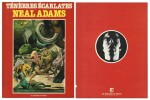
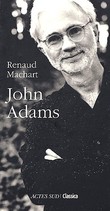
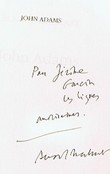


















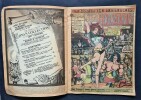
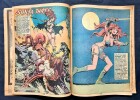







![The Action of Light on Selenium. Received May 18, - Read June 15, 1876. - [INVENTING THE SOLAR CELL]. "ADAMS, W.G. (+) R.E. DAY.](https://static.livre-rare-book.com/pictures/LLX/51467_1_thumb.jpg)
![The Action of Light on Selenium. Received May 18, - Read June 15, 1876. - [INVENTING THE SOLAR CELL]. "ADAMS, W.G. (+) R.E. DAY.](https://static.livre-rare-book.com/pictures/LLX/51467_2_thumb.jpg)
![PUBLIC DIFFERENCE : Architecture, Shame, Photography. [Bristol calligraphié de l'artiste]. ADAMS (Dennis) / DUVAL (Adèle)](https://static.livre-rare-book.com/pictures/SPN/spn-698_1_thumb.jpg)
![PUBLIC DIFFERENCE : Architecture, Shame, Photography. [Bristol calligraphié de l'artiste]. ADAMS (Dennis) / DUVAL (Adèle)](https://static.livre-rare-book.com/pictures/SPN/spn-698_2_thumb.jpg)


